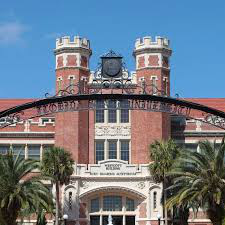Speaker
Description
Among the light baryons, the $J^\pi = \frac{1}{2}^-$ $\Lambda(1405)$ baryon is an important special case by sitting just below the $\bar{K}N$ threshold and decaying almost exclusively to $\Sigma\pi$. It has long been hypothesized to be either a molecular bound state or a continuum resonance, or that it is a simple quark-model resonance, the $P$-wave companion of the $\Lambda(1520)$. In recent years chiral unitary models have suggested$^a$ that there are two isospin zero poles present in this mass region, and that the ``line shape" of the $\Lambda(1405)$ depends to what extent each of the two poles are stimulated in a given reaction. Evidence for this interpretation was reported by the CLAS collaboration$^b$ in elementary photoproduction, albeit with limited statistics. Below the $N\bar{K}$ threshold, the $\Lambda(1405)$ decays to the three $\Sigma\pi$ charge combinations, but the $\Sigma^{0}\pi^{0}$ mode is purely $I=0$, uncontaminated by complications arising from $I=1$ scattering processes contributing to the reaction mechanism in the $\Sigma^{+}\pi^{-}$ and $\Sigma^{-}\pi^{+}$ decays, nor from production and decay of the nearby $\Sigma^{0}(1385)$ hyperon.
The GlueX experiment at Jefferson Lab has been used to study the $\Lambda(1405) \to \Sigma^{0}\pi^{0}$ decay mode with a photon beam in the energy range 6.5 - 11.6 GeV incident on a liquid hydrogen target and using a large acceptance charged particle tracking and electromagnetic calorimeter system. We focus on the preliminary results of $d\sigma/dM_{\Sigma^{0}\pi^{0}}$ in the $-(t-t_{min})$ range 0 - 1.5 GeV$^2$ from analyzing the reaction $\gamma p \to K^{+}\Lambda^*$ using the data collected during the first phase of the GlueX experiment.
Two hypotheses were compared for fitting the line shape of $\Lambda(1405)$ - a single $\Lambda(1405)$ state and two coherent states parameterized with Flatt\'{e} amplitudes. Our preliminary results favor the use of two coherent states to fit the line shape and indicate the $\Lambda(1405)$ is a composite baryon state.
$^a$cf. recent review: M. Mai, U-G, Meissner, Eur. Phys. J. A 51, 30 (2015)
$^b$K. Moriya et al.(CLAS Collaboration), Phys. Rev. C 87, 035206 (2013)
| speaker affiliation | The Catholic University of America |
|---|

